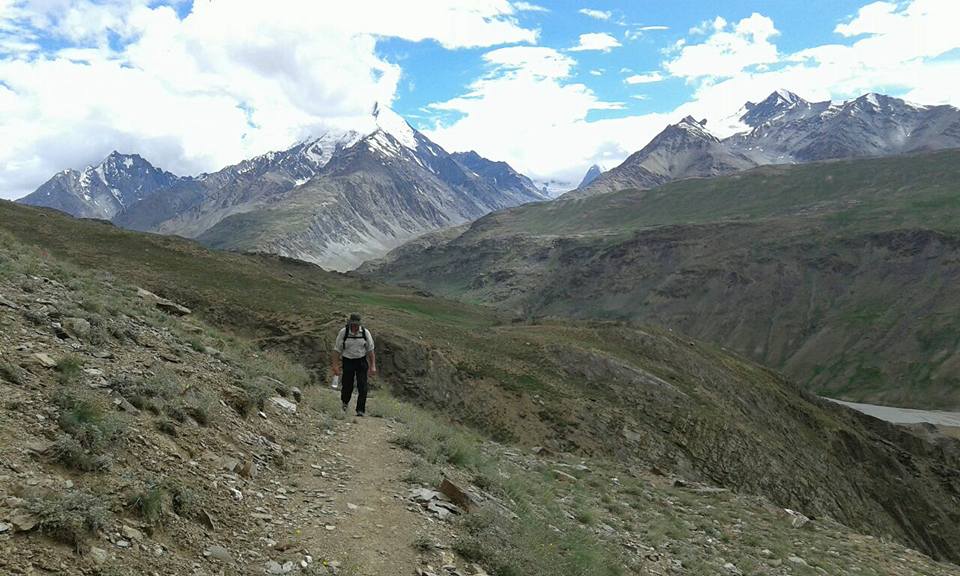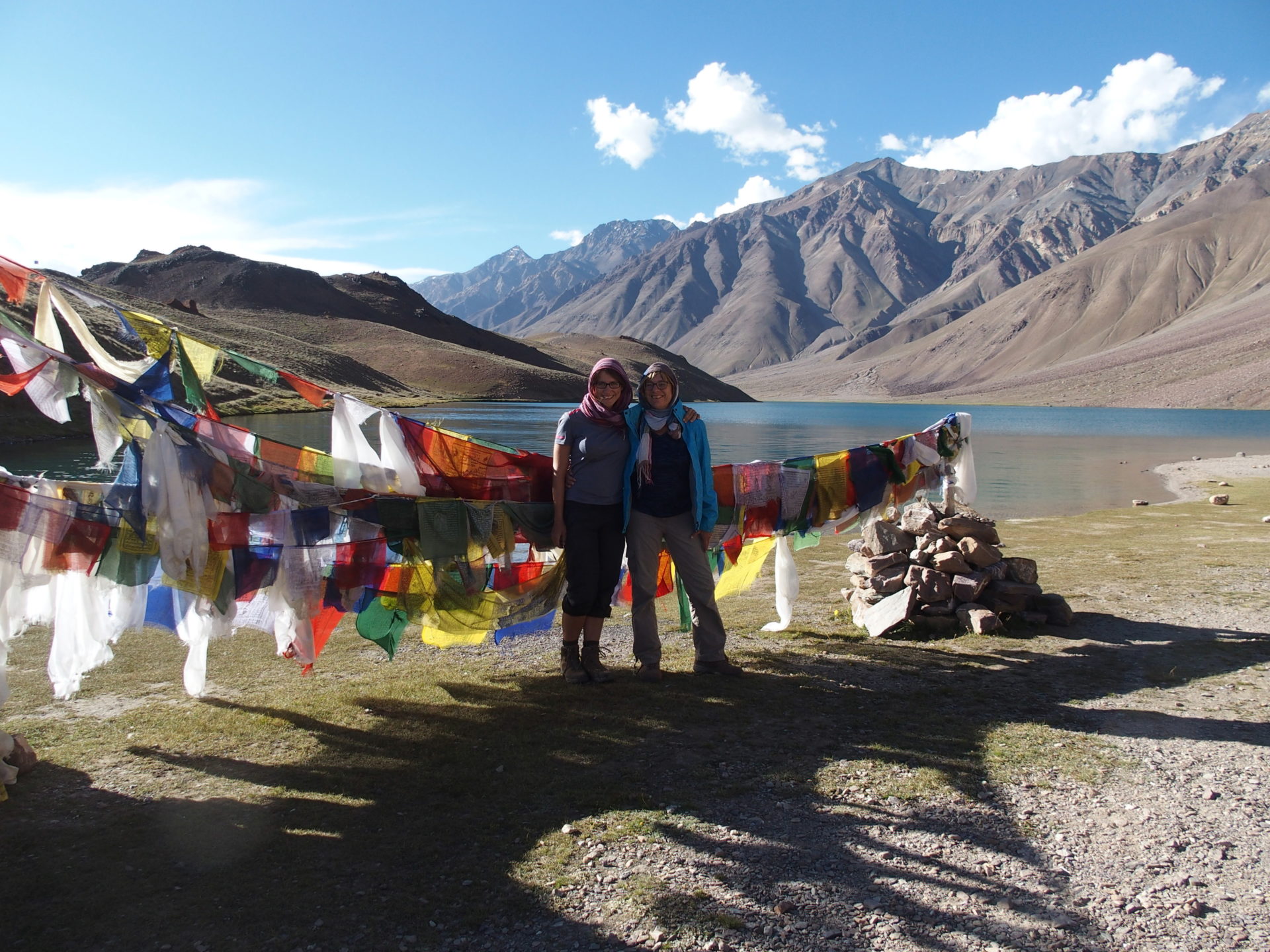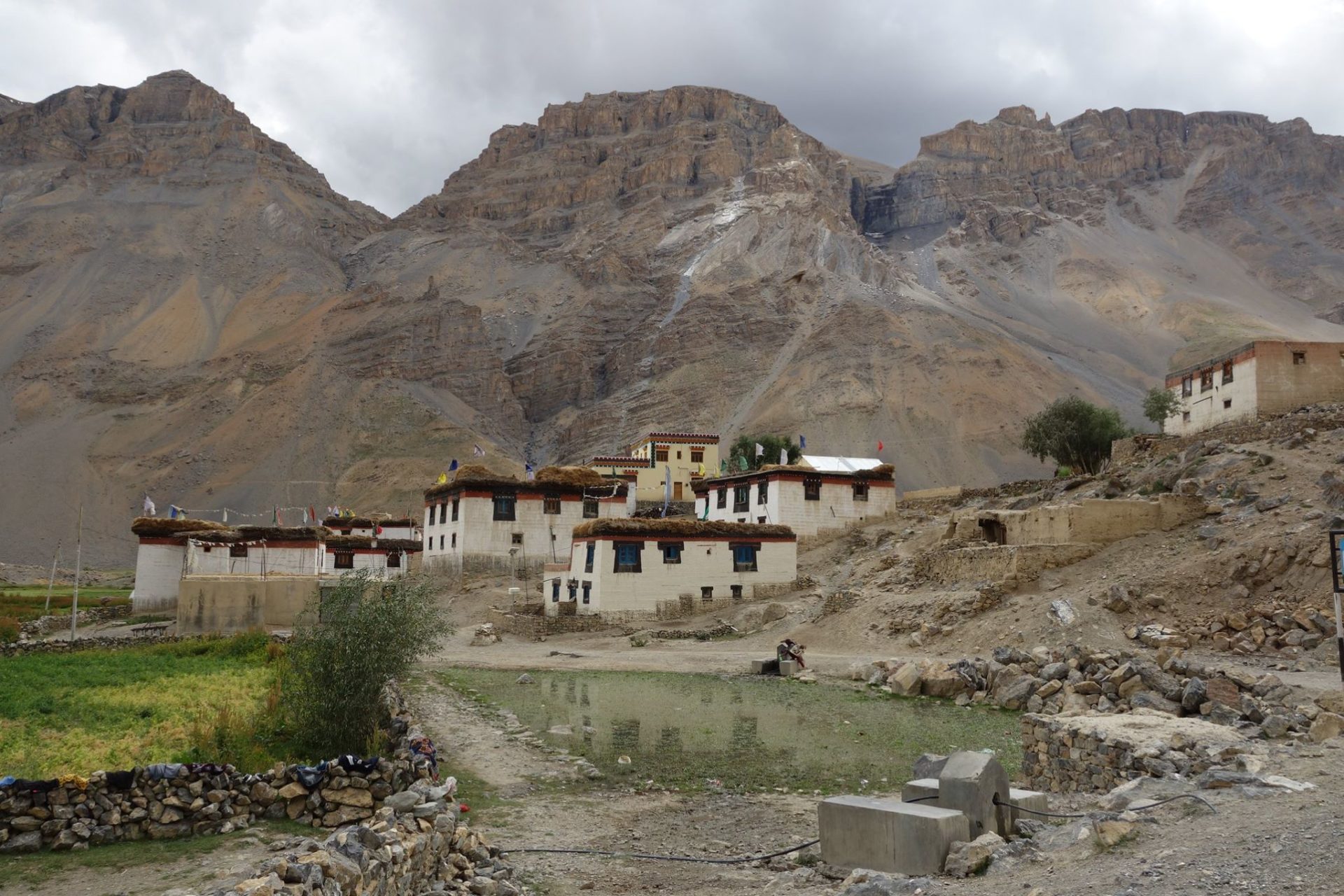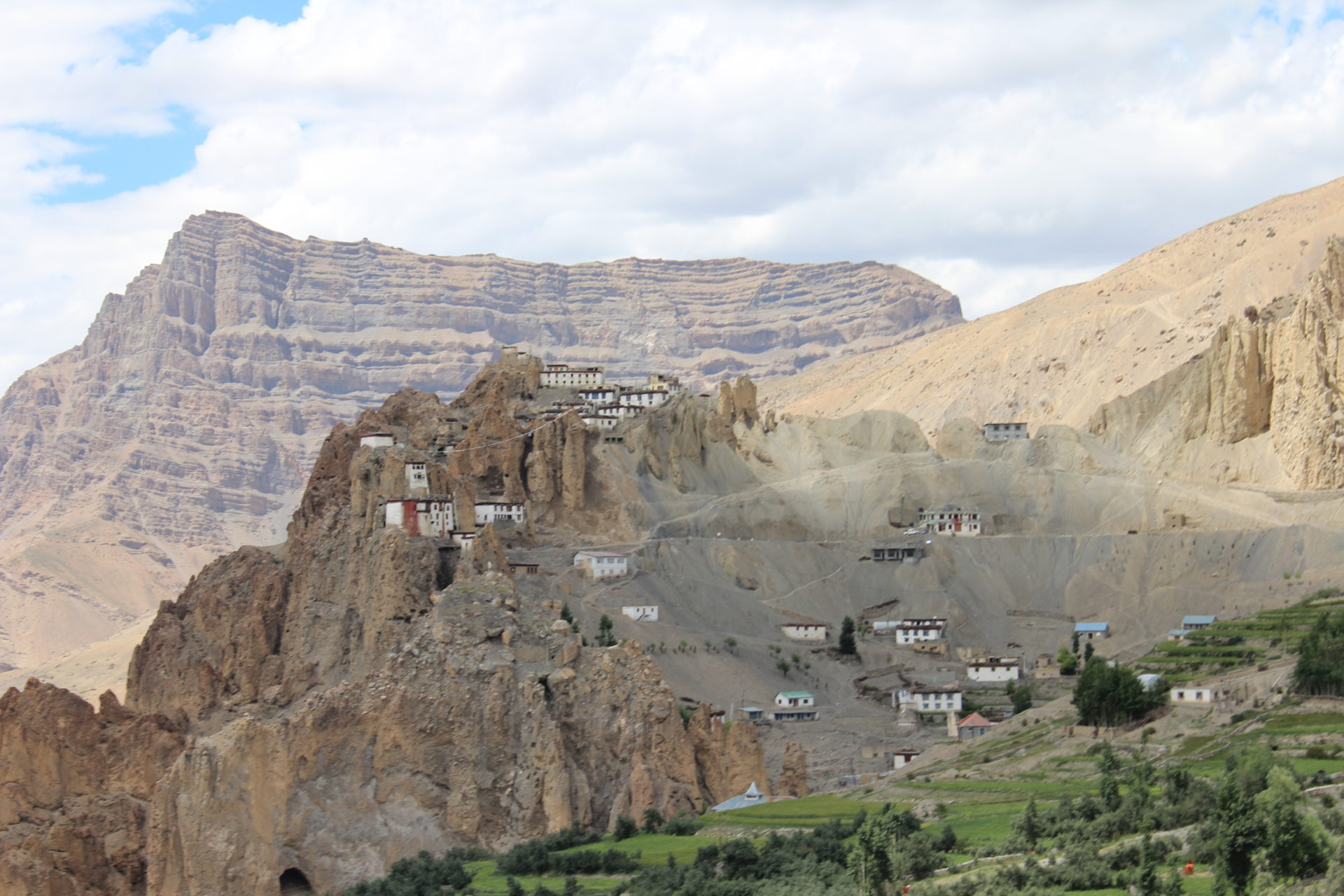- Sport & Abenteuer Reisen
- Aktive Kultur Reisen
- Kultur Reisen
- Trekking Reisen
Overview
The Spiti Valley is a fairy-tale country: mountain slopes in all kinds of colours, eroded mountains, raging rivers, small villages surrounded by green pea and barley fields, deep gorges… all this is part of the surreal landscape. Spiti is strongly Buddhist and has about 30 monasteries- most of them hunddreds of years old. During the long winter season, the valley is shrouded in snow and cold.
Spiti is located in the rain shadow and is therefore perfect for visiting during the monsoon season.
When you trek through the high cold mountain desert, you get a great insight into the rich culture and life of the Spiti inhabitants and may be lucky enough to spot some rare animals. (snow leopard, blue sheep, Tibetan wolf).
Kinnaur is adjacent to Tibet and is located in the northeastern corner of Himachal Pradesh. The beautiful district has only recently been opened to visitors. There are secluded green valleys, orchards and remote villages.
Program
Day 1 Arrival in Delhi, India
Pick-up service from the airport to our hotel (overnight stay at the hotel).
Day 2 Sightseeing Delhi, in the evening drive to Manali by bus 585 km
In the morning we take a tour by metro, rickshaw and on foot through Old and New Delhi. In the afternoon we take the night bus to Manali (14 hours). (Overnight stay on bus) B/-/-
Day 3 Manali Recreation Day and local Sightseeing Tour 2050 m
In the morning we reach Manali and check into our hotel. Today, recovery is on the agenda. We enjoy the green mountain landscape of Manali and later go on a small sightseeing tour. (Overnight stay at the hotel) B/-/-
Day 4 Manali to Batel by Jeep 110 km
Today we start with the jeep and cross the 3980 meter Rothang Pass, the gateway to the Spiti valley. The route continues along the raging Chandra river to Bathel. We enjoy the view of the Shigri Glacier, the largest glacier here in the area. Bathel consists of only a few cabins that provide accommodation and food for travellers.
Here we spend the rest of the day acclimatizing. (Overnight in a tent) B/L/D
Day 5 Batel to Chandratal Lake (4270 m) Trek 4 hours
Today our trek starts on the dirt road to Lake Chandratal. Chandra means moon and Tal lake. The beautiful lake has the shape of a crescent moon and is the source of the Chandra River. (Overnight in a tent) B/L/D
Day 6 Chandratal to Kunzum La Trek 3 hours
Kunzum La to Kaza by jeep 60 km
Today we climb the Kunzum Pass which is above 4551 m. There is a gompa (Buddhist temple) here and it is a ritual that every vehicle circles the gompa clockwise once for happiness. From here we continue with the Jeep. We drive through the first village in the Spitital: Losar and continue to the district capital Kaza. (Overnight stay at the hotel) B/L/-
Day 7 Kaza to Kibber (4200 m) by jeep, on the way visit the Ki Gompa 19 km
Kibber Trek to Taschigam 4 hours
Kibber is considered one of the highest Asian permanently populated villages, which has electricity and road connections. Ki Monastery is the largest gompa in the region. 200 monks live in the gompa, built in the fourteenth century. (Overnight at Homestay) B/L/D
Day 8 Taschigam Langza (4635m) to Comic (4600m) via Hikkim (4500m) Trek 6-7 hours
The village of Langza is one of the highest villages in Asia. In the area we have the chance to find prehistoric marine fossils and mussels. The golden Buddha can be seen from afar. First it goes down a steep gorge and up again. Then the path winds slowly but steadily up to Hikkim and Comic. (Overnight at Homestay) B/L/D
Day 9 Comic to Dhimul (4357 m) Trek 5 hours
Today we reach our maximum height on this tour: 4900 meters. After crossing a small pass, we have a beautiful view of the village of Dhimul. We visit the local museum. (Overnight at Homestay) B/L/D
Day 10 Dhimul to Lalung (3758 m) Trek 4 hours
We have a panoramic view of the valley. First it goes downhill, then just on. We cross a river and ascend to Lalung. Here there is an ancient monastery, which is looked after by a single monk. (Overnight in a Homestay) B/L/D
Day 11 Lalung to Dhankar Lake to Dhankar (3890 m) Trek 5 hours
Today is our last day of trekking. It goes to a small enchanting lake and then down to Dankhar. Here we visit the famous Dhankar Gompa. It is located high up on steep rocks. (Overnight stay at Homestay/Hotel) B/L/-
Day 12 Dhankar to the Pin Valley to Tabo (3050m) by jeep 80 km
We enjoy the ride by jeep to the Pin Valley, the area of the snow leopard. Then we continue to Tabo. Tabo, located on the right side of the spiti river, is surrounded by high mountains. The important and 1000 year old monastery was founded by the famous Rinchen Tsangpo. (Overnight stay at the hotel) B/-/-
Day 13 Tabo to Nako 68 km by jeep
Nako is the most famous and largest village in the Hingrang valley. Here yaks, horses and donkeys graze peacefully. (Overnight stay at the hotel) B/-/-
Day 14 Nako to Kalpa 123 km by jeep
Kalpa is famous for its cloth and hat production. (Overnight stay at the hotel) B/-/-
Day 15 Kalpa to Recong Peo to Chitkul 77 km by jeep
Recong Peo is the district capital of Kinnours. The Kinnour Valley is one of the most beautiful and unknown regions in the Himalayas. The River Sutley crosses the area. The summers are short, the winters long. Although the majority of the population is Hindu, Buddhism has a great influence in lifestyle and customs. Today we reach the Sangla Valley, one of the most romantic and beautiful valleys in Kinnor. It is 95 kilometers long. On both sides of the Sangla River there are green pastures with flowers and fruit trees. Chitkul is the last village in this valley. You feel like you’re in a fairy tale, with its small wooden huts and green fields. (Overnight stay at the homestay) B/-/-
Day 16 Chitkul to Saharan 112 km by jeep
Sarahan is tiny but beautiful. It is dominated by the Shrikhand Mahadev summit (5227m). Saharan was the ancient capital of Rampur Bushehr, one of the largest areas in the mountains around Shimla. (Overnight stay at the hotel) B/-/-
Day 17 Saharan to Shimla 172 km by jeep
In 1864, Shimla was declared the summer capital of British India. Now it is the capital Himachal Pradesh. The famous mountain station is a popular tourist destination for Indians who escape the heat of the mainland in summer. The city still has a British atmosphere with its churches and Victorian architectural style. (Overnight stay at the hotel) B/-/-
Day 18 Sightseeing in Shimla
We enjoy Shimla, go on a shopping tour or visit the sights. (Overnight stay at the hotel) B/-/-
Day 19 Shimla to Kalka with the Toytrain
Kalka to Delhi by car (280 km)
We enjoy the ride with the historic Toytrain. The route was opened in 1903 and runs over 800 bridges, through 102 tunnels and takes 900 curves. The landscape is unique! We change to a car in Kalka that takes us to Delhi. (Overnight stay at the hotel) B/-/-
Day 20 Departure from Delhi back to home B/-/-
Services
- Transfer to and from all airports within India
- Sightseeing tour in Delhi, Manali and Spiti
- All entrance fees during sightseeing tours
- Transport within India with air-conditioned Innova/Jeep and Volvo bus
- all accommodations in homestays, hotels or deluxe tents with attached bathroom and dinner (Bathel 1 night, Chandratal 1 night)
- During the trek full catering
- local guide and driver
VisaInternational flightsnot mentioned food and beverages (B: breakfast, L: lunch, D: dinner)
Highlights

Spiti Valley 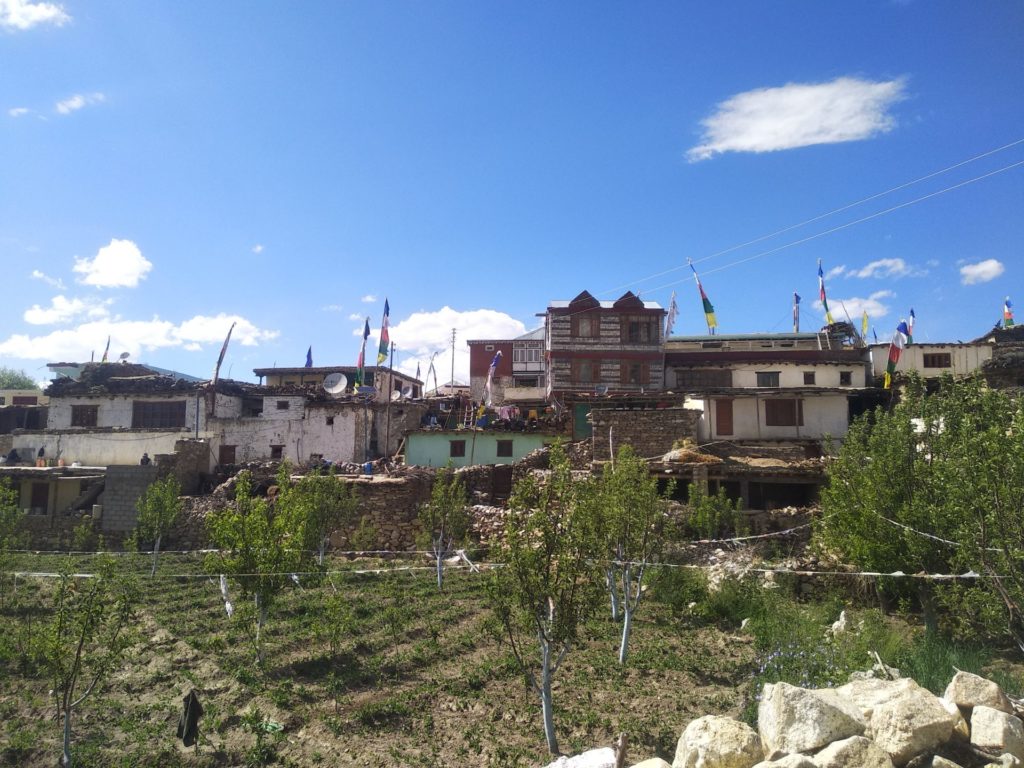
Tabo 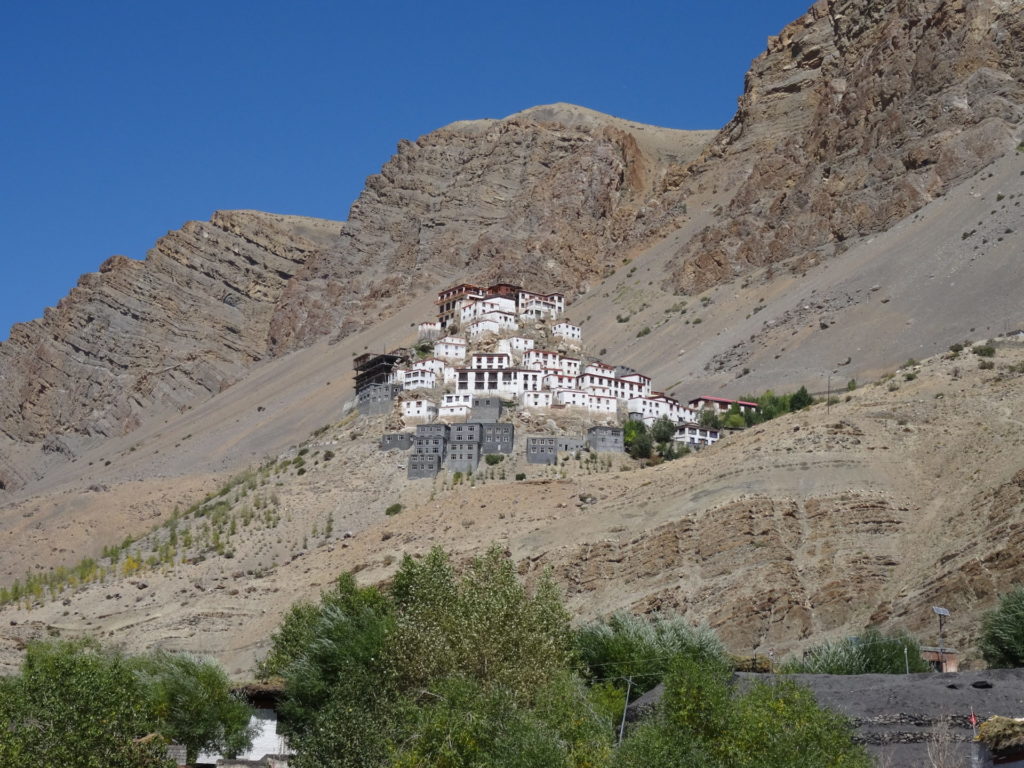
Ki Monastery 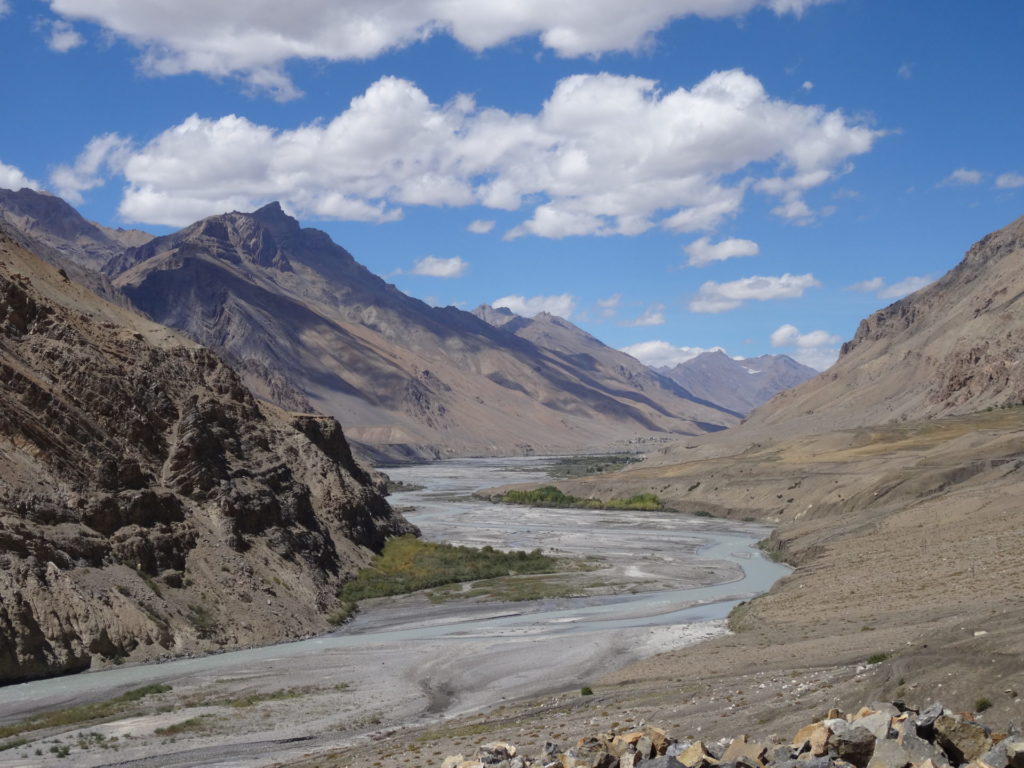
Spiti Valley 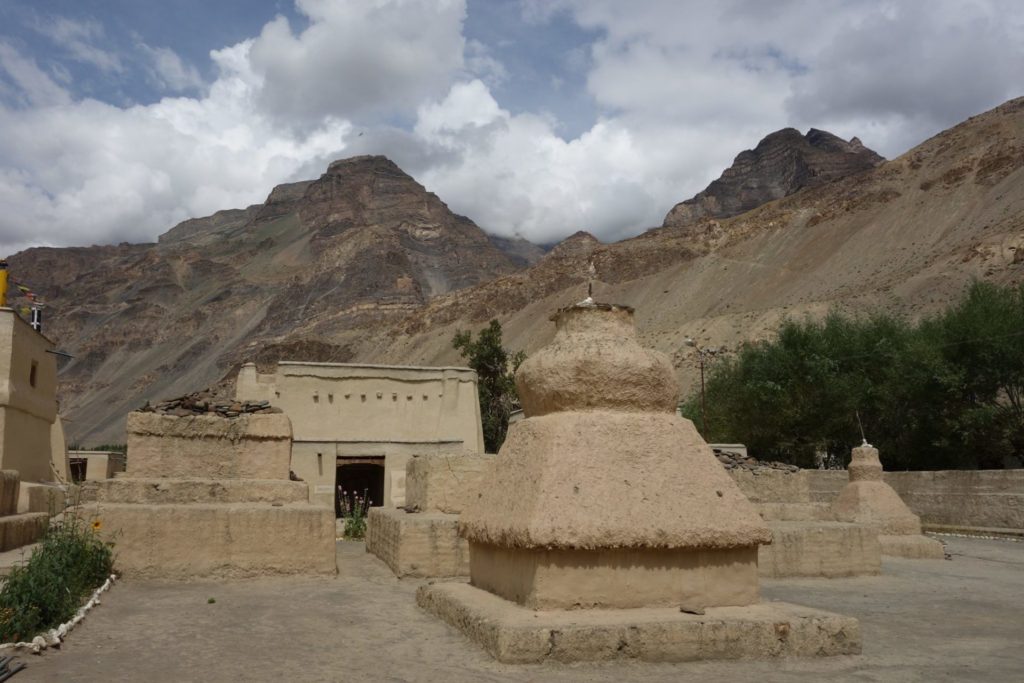
Tabo Monastery 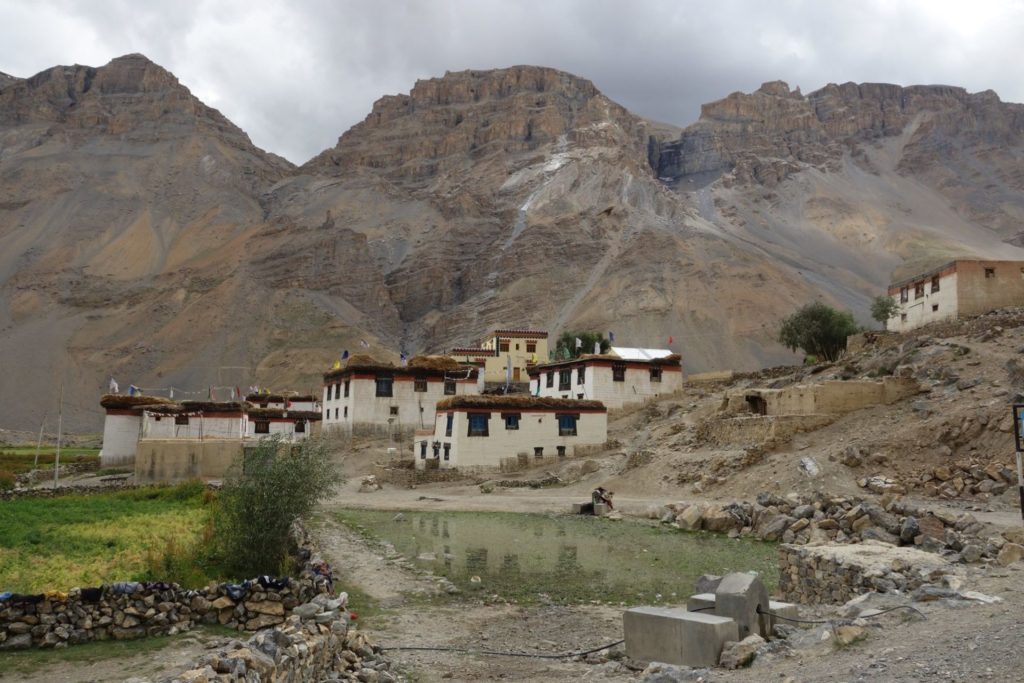
Spiti Village 
Break 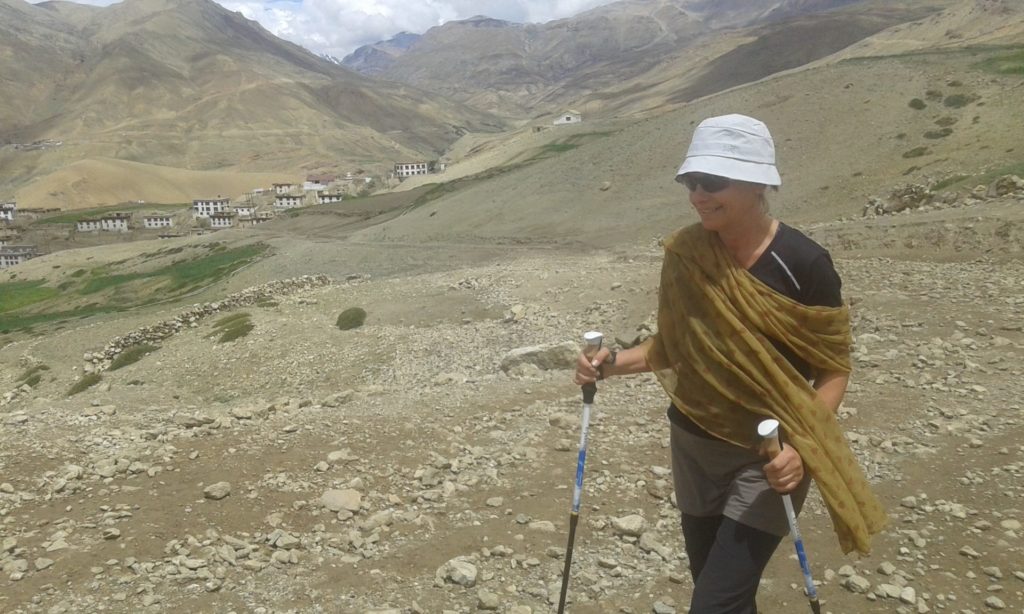
Trekking 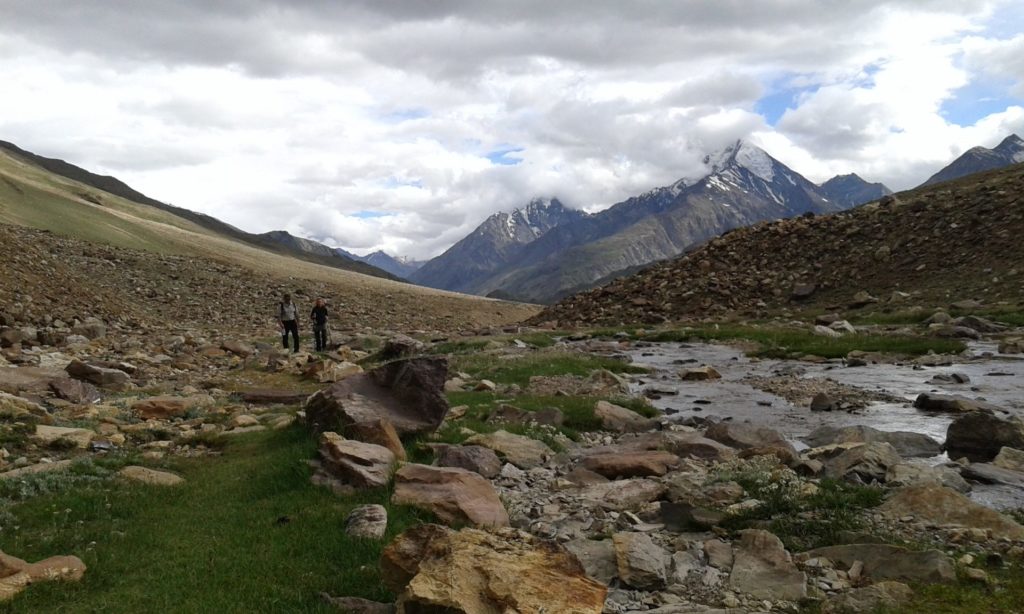
Trekking 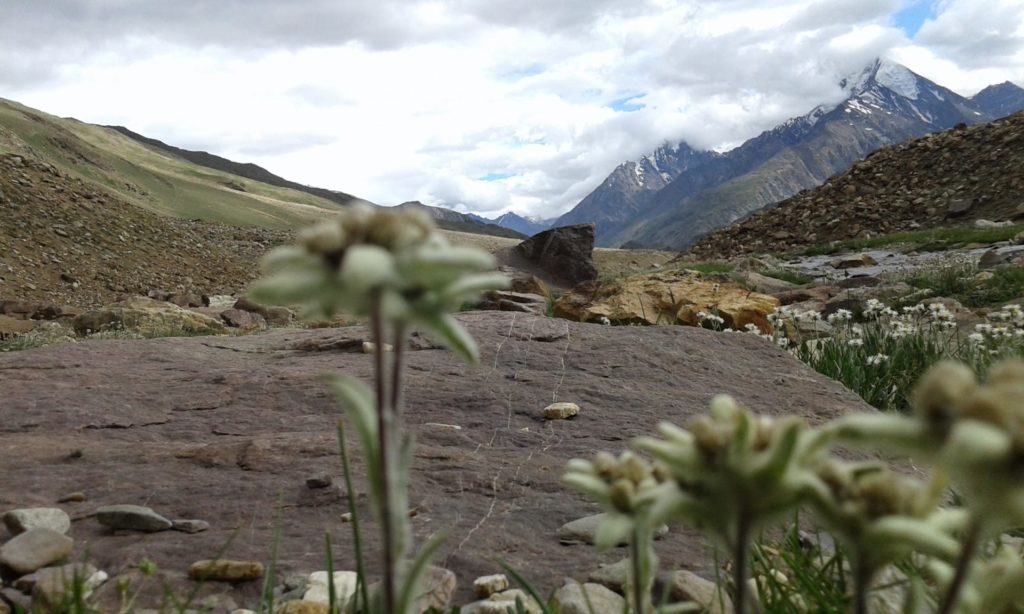
Beauty 
Kunzum Pass 
Chandratal Lake 
Yoga 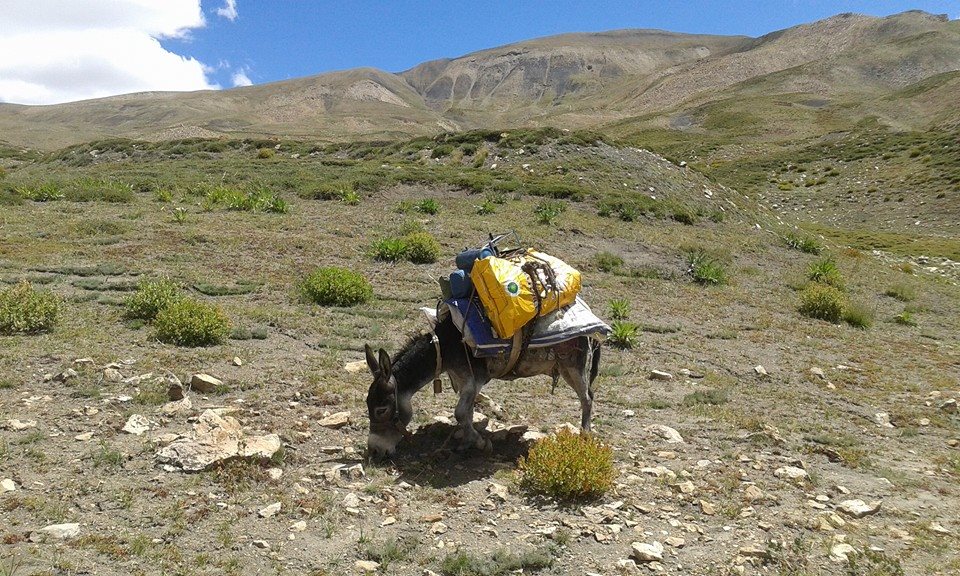
Donkey 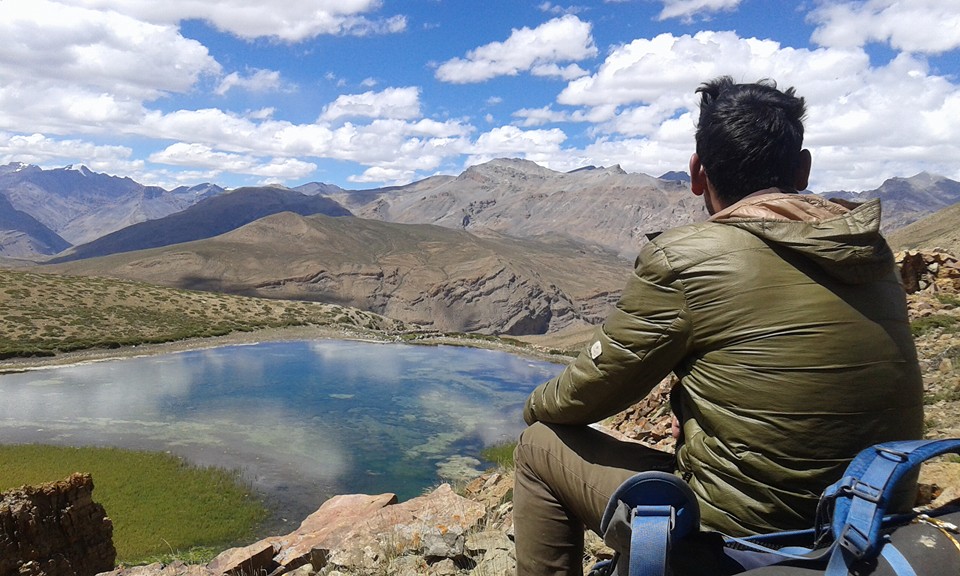
Trek 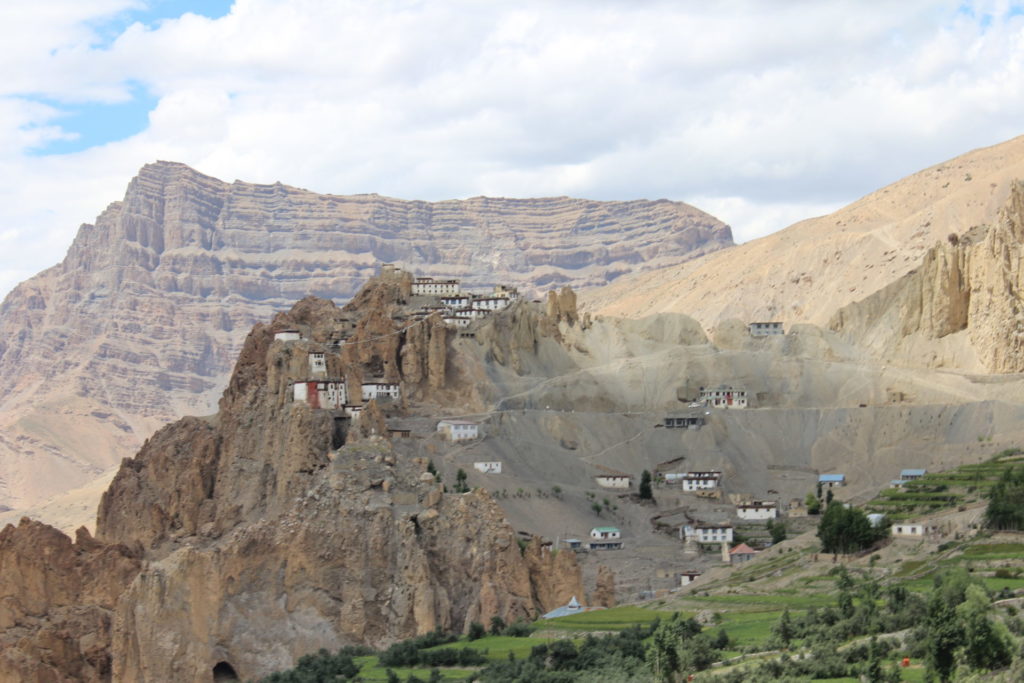
Dhankar Monastery in Spiti 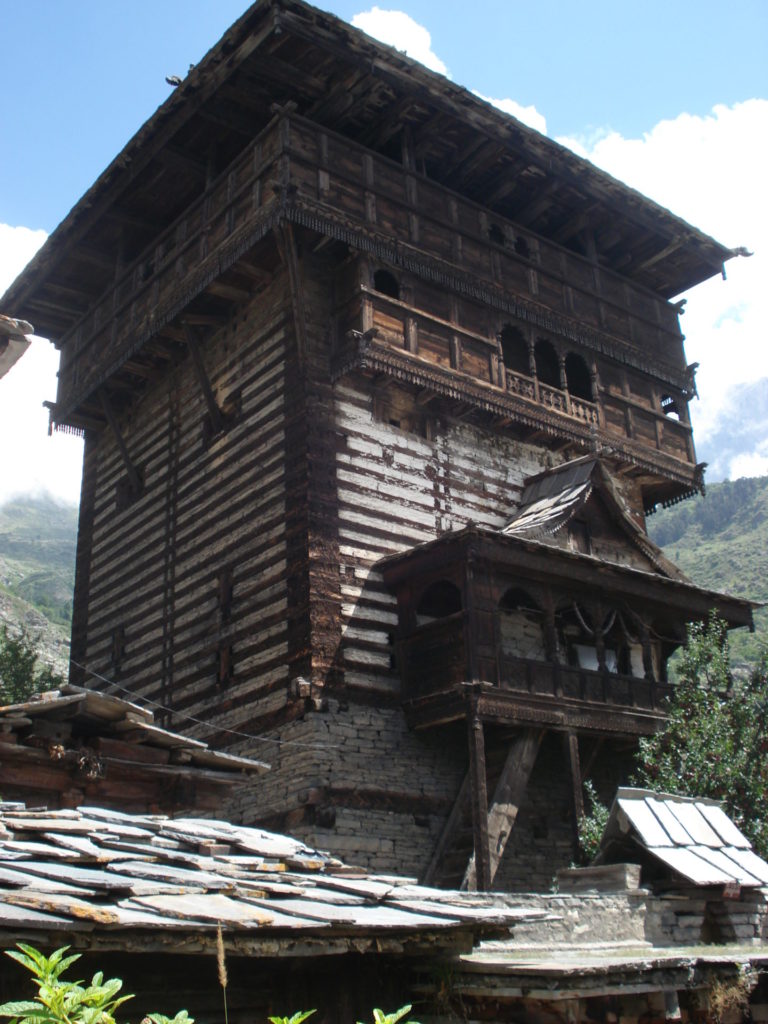
Saharan 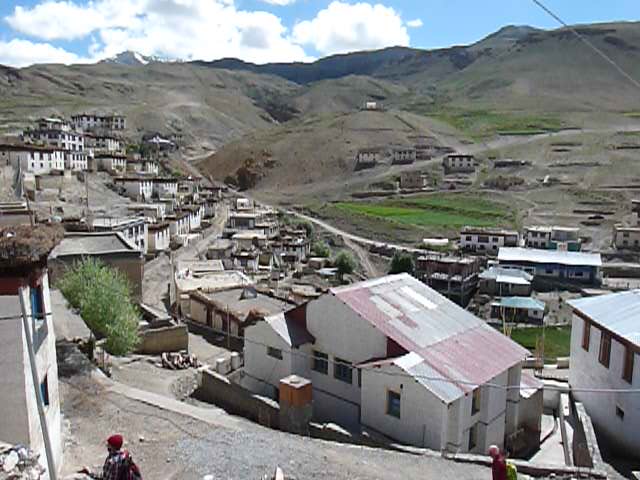
Kibber 4200 m 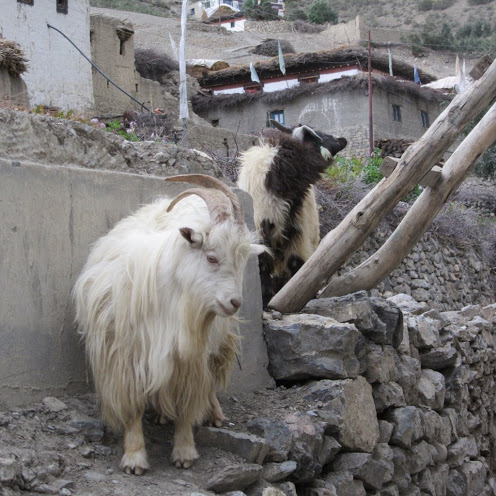
Spiti Village 
Trek 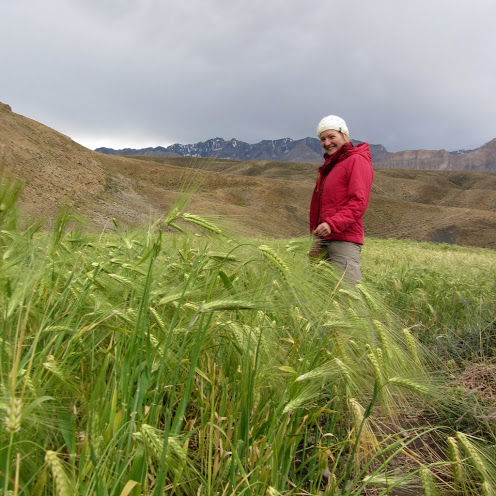
Trekking in Spiti 
Trek
Prices and Dates
This tour is possible from mid-June to mid-September on any dates and also in modified form from 1 person.
Please make an inquiry for the price of the tour.
Tour Info
Requirements
A relatively simple Homestay Trek. The route is mostly flat, but at an altitude of 4000 meters, which will make breathing seem a bit tedious.
Every now and then it is also necessary to master some steeper sections. But during the small stages of around 4-5 hours everyday, we have enough time to rest and admire the scenery.
Information about the Trekking Tours with Chalo! Travels
Mountain guide and trekking team
On all our treks we have at least one (for larger groups of 6 participants two) trained local mountain guide. Our mountain guides have all completed at least the Indian mountaineering training, many of them have also completed the advanced courses.
They are familiar with the trekking routes and know the terrain excellently. All our mountain guides speak English.
In addition, there is a local team consisting of a cook (if the group consists of only two participants, the mountain guide also takes over the tasks of the cook), helpers, horsemen with horses or Nepalese porters, depending on the type of trek.
All our team members have been working with us for years, are very friendly and always strive to provide our guests with a great trekking experience. Their English (besides of the Guide) is rather mediocre or non-existent, but this is not necessarily a hindrance to communicating with them.
Trekking routes
The trekking routes are designed according the skills of our guests and are all feasible for a person with a good fitness level, unless otherwise mentioned. The daily routes are between five and eight hours long (with breaks) and an average increase of around 500-800 metres of altitude is completed.
In between, rivers may have to be crossed. The paths are partly well developed, but sometimes also almost non-existent. On our trekking routes there are hardly any villages in between, so we will take enough food for the whole tour.
On our treks we cross passes, snow or glaciers. On steep slopes, we have safety equipment with us.
Daily routine (Depending on the length and intensity of the trek, the times may vary)
7: 00 am Get up with Tea
7:30-8:30 am Breakfast
7:00-9:30 am Dismantling of the camp
8:00- 9:30 am Start Trek
1:00 pm Lunch on the way
3:00-5:00 pm Arrival at the camp and camp construction
3:30-5:30 pm Snacks
7:00 pm Dinner
Altitude and altitude sickness
Altitude sickness is a very important topic that should not be underestimated, especially during our trekking tours in the Indian Himalayas. At altitudes above 3500 m, our body has to slowly get used to the low air pressure, which also causes less oxygen to enter our lungs. The first signs of altitude sickness are headaches, which are accompanied by dizziness, nausea, insomnia and loss of appetite. It becomes problematic when water accumulates in the lungs and brain and edema occurs. Then only the immediate descent to lower altitudes will help. To prepare for the heights on our treks, we will either spend a few nights at high altitudes before the trek or slowly ascend during the trek to acclimatize. If we notice that there are problems with our guests (each person is otherwise able to acclimatize, regardless of age, gender and fitness level), it may happen that either the entire group or the concerned participant descends/returns with a team. In addition, it makes sense to take an emergency drug for altitude sickness. For this, it is best to consult the pharmacy or the travel doctor. For certain treks we will also have oxygen with us.
Luggage
Each trekking participant is responsible for his own clothes and personal belongings. Depending on the trek, we are either with horses or porters. If we have load horses, one bag per participant can be loaded onto the horse. In the case of treks with porters, all personal luggage must be carried independently. Tents, sleeping bags, mattresses and food are carried by our porters.
For trekking tours with horses, a day backpack with space for the lunchbox, a water bottle and warm overcoat clothing should be taken with you. Here to the complete packing list for our trekking tours.
Packing list for trekking tours
- sleeping bag at least -10°C
- large backpack or soft carrying bag so that the load animals can carry the luggage
- Small carrying backpack for the day approx. 30-40 l with rain protection
- flashlight/headlamp
- 2 refillable water bottles
- hiking poles
- passport and passport copy
- camera with spare battery and memory card
- headgear as sun protection
- Good Sunglasses
- cap
- Scarf, Buff
- Gloves
- wind-proof trekking pants
- trekking pants
- Functional Underwear Long
- hiking boots
- socks thick and thin
- sneakers, sandals and/or slats
- windbreaker
- Warm Jacket
- fleece sweater/jacket
- Tshirts
- sunscreen, lip balm min. Protection 40
- fat cream
- water purification tablets (boiled and filtered water is provided)
- own medications for headaches, nausea, digestive problems, colds)
- bubble patches and dressing material
- own hygiene articles
- Toilets Paper
- hand disinfection
Meals
During the trek there will be a vegetarian full catering. Water is either boiled or we have a water filter with us.
Breakfast (daily selection):
- Coffee/Tea
- Oatmeal porridge/muesli/cornflakes/Indian porridge
- Indian breakfast
- Sliced fruit/vegetables
Lunch (mostly lunchbox), sometimes warm in the camp
- Sandwiches/Indian (rice, chapati, vegetables)/potatoes
- Juices
- Fruit
Snacks
- Tea/coffee
- Indian snacks
Soup
Dinner
- Vegetable dish
- Lentil dish
- Rice
- Chapati
- Salad
- Dessert
Accommodation and camp
We have very comfortable and spacious two-man tents. Our mattresses are practical but simple if there are problems with sleeping on hard surfaces, please take your own mattress with you or order from us. Our sleeping bags are freshly washed and have a very good quality with comfort zone up to -5°C/extreme zone up to -20° C. It is recommended to bring personal indoor sleeping bags.
In addition, we have a spacious dining tent with tables and chairs, a kitchen tent for the team and a toilet tent. For treks up to 4 people, the kitchen tent can also act as a dining tent at the same time.
For trekking tours with porters, we will take our smaller, lighter tents with us and do without a toilet tent.
Weather
In the Himalayas, temperatures fluctuate widely. While it can get warm up to 25°C during the day and the sun is not only warming, but also very intense (sun protection is a must), it can also cool down significantly below the minus-grade at night, especially in the months end of September and October, as well as in June. There may also be weather changes with snow on the passes.



